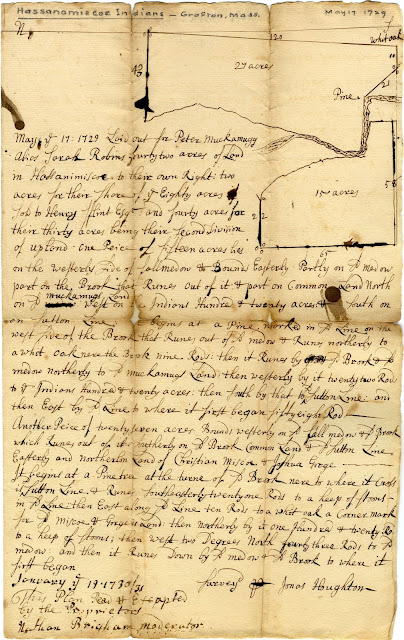My Favorite Resource for New England Native American Research
My favorite record group for tracking Native people in New England is housed in the National Archives down in Washington, DC. It's part of Record Group 75 also known as the records of the Bureau of Indian Affairs. The pages known as 75.12.2 are the Records relating to Kansas claims of New York Indians. Below is the front page of one of the many records found in this group.
Back in the early 1780s, Samson Occum and Joseph Johnson from the Mohegan tribe in Connecticut founded a town in north central New York for Christian Natives from New England. They negotiated with the Oneida Tribe of New York for this plot of land and called it Brothertown. Families from Mohegan, Narragansett, Nipmuc, and other southern New England tribes joined Occum and Johnson in Brothertown. Of course, north central NewYork had good, fertile soil and by the early 1800s, the wants of the white settlers in that region outweighed the needs of the Native people.
The United States encouraged and assisted the Oneidas and Brothertons (and the Stockbridge Indians who had by this time joined the Brothertons in New York) in negotiating a treaty agreement with the Menominee and Ho-Chunk tribes for land to settle on in Wisconsin. Soon after the treaties were signed by all parties, the Wisconsin tribes objected - stating that they had believed the New York tribes would only live on the land not own it.
The United States tried to reconcile the matter by moving the New York Indians further west to Kansas. That didn't work out either and many of the families stayed in Wisconsin. The "Kansas Claims" are the result of a suit forcing the federal government to make reparations for the land that should have gone to the tribes.
What a genealogical goldmine! Applicants were instructed to give names, dates and birthplaces of themselves, their spouses and their children. In addition, the application asks for the names and places of birth of the applicant's (and spouse's) parents, siblings, grandparents, and aunts and uncles. All that information conveniently located on three pages! As an extra bonus, the form also asks for all ancestors as far back as 1838.
Annie Scott is not a relation of mine but this is still an exciting document! Many of these documents can also be found at the New England Historical and Genealogical Society (NEHGS) in Boston, MA. The Brotherton Collection in the manuscript department at NEHGS has much information on Brothertown history and ancestry.
Aquene,
Cher





Comments
Post a Comment